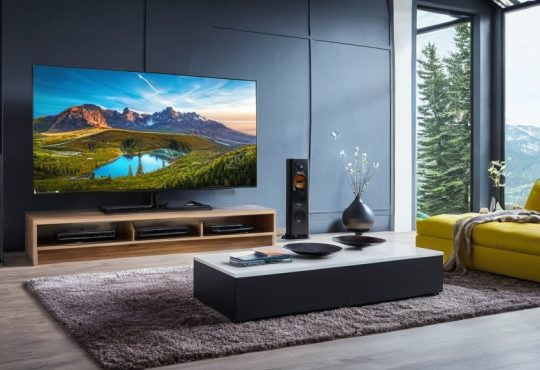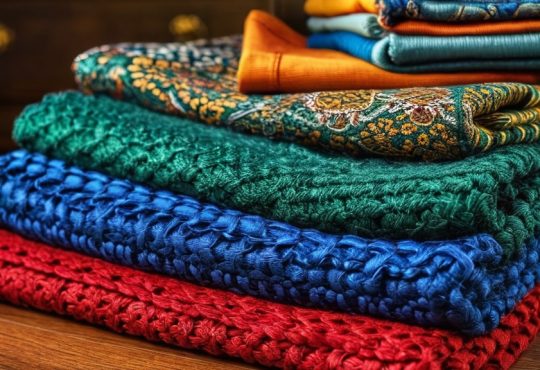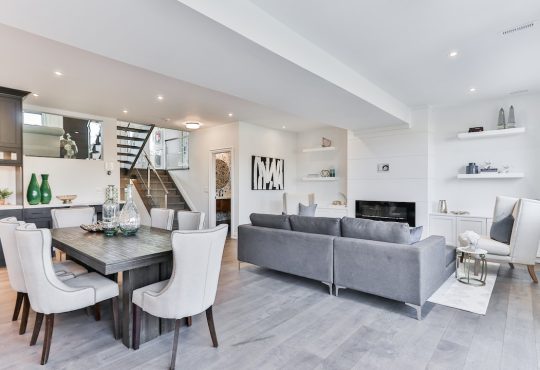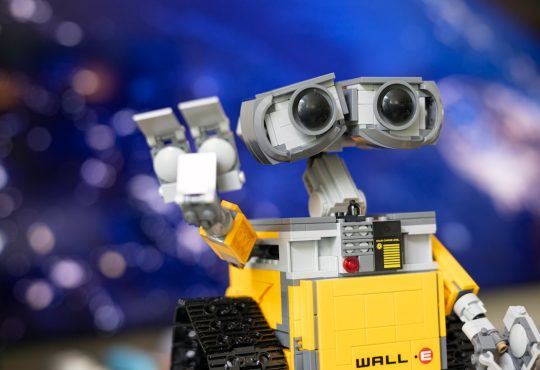
Why plexiglass is the perfect choice for a sleek and practical kitchen backsplash
When you think of a kitchen backsplash, your mind likely pictures a familiar scene: intricate tile mosaics, stately slabs of marble, or perhaps rustic stone. These materials have long been the standard-bearers of kitchen design, offering durability and a classic aesthetic. However, in the search for a solution that combines minimalist beauty with modern practicality, a different contender has emerged. Plexiglass, also known as acrylic, is stepping out from its industrial origins and into the heart of the home, offering a compelling alternative that is both sleek and remarkably functional.
If you are renovating your kitchen or simply looking for a significant upgrade, it’s time to look beyond the grout lines and consider how a sheet of high-quality acrylic can transform your space. It serves as a smooth, reflective shield, protecting your walls while creating an environment that feels cleaner, brighter, and more expansive. Let’s explore why this versatile material is becoming the perfect choice for homeowners who value both form and function.
Before we dive into the specific benefits, it’s important to understand what plexiglass truly is. The term itself is a brand name that has become synonymous with acrylic sheeting, much like Kleenex is for tissues. This material is a transparent thermoplastic, a type of plastic that is often used as a lightweight and shatter-resistant alternative to glass. But calling it “just plastic” does it a disservice. It is a highly engineered material with properties that make it uniquely suited for the demanding environment of a kitchen.
More Than Just Plastic: Understanding Acrylic
Plexiglass, or polymethyl methacrylate (PMMA), is a synthetic polymer known for its exceptional clarity, rigidity, and impact strength. Unlike cheaper plastics that can yellow over time or become brittle, high-quality acrylic is UV-stable and built to last. It is manufactured in large sheets of varying thicknesses, colors, and finishes. Think of it not as a flimsy piece of plastic, but as a solid, engineered panel. It’s the same material used for everything from aircraft windows to large public aquariums—places where clarity and strength are non-negotiable. When you bring this level of engineering into your kitchen, you are installing a material that is prepared to handle the rigors of daily life.
A Clear Advantage Over Traditional Glass
While a glass backsplash can offer a similar sleek appearance, plexiglass holds several practical advantages. The most significant is its impact resistance. Plexiglass is up to 17 times more impact-resistant than standard glass of the same thickness. In a busy kitchen, where pots, pans, and utensils are constantly in motion, this provides invaluable peace of mind. An accidental knock that might chip or shatter a glass panel will likely leave a plexiglass sheet entirely unscathed.
Furthermore, plexiglass is significantly lighter than glass, weighing less than half as much. This makes it far easier to handle, transport, and install. A large panel that would be a two-person job with heavy, fragile glass becomes a manageable task for a single, competent DIY enthusiast. This reduced weight also means less strain on your walls and fewer specialized fixings required for a secure installation.
The Foundation of a Modern Kitchen Design
Ultimately, the reason to consider plexiglass is that it aligns perfectly with the principles of modern design: clean lines, uncluttered surfaces, and a focus on light and space. A traditional tiled backsplash, with its grid of grout lines, visually breaks up a wall. A plexiglass backsplash does the opposite. It creates a single, continuous surface that acts as a quiet, confident backdrop to your cabinetry and countertops. It doesn’t shout for attention; instead, it enhances the other elements of your kitchen, allowing them to shine. It is the architectural equivalent of a blank canvas, giving you the power to define the mood and style of your space.
The Unmatched Aesthetic Appeal of a Plexiglass Backsplash
The visual impact of a plexiglass backsplash is immediate and striking. It introduces a level of sophistication and minimalism that is difficult to achieve with other materials. Its beauty lies in its simplicity and its ability to manipulate light and color in unique ways.
A Seamless, Grout-Free Surface
The single most defining aesthetic feature of a plexiglass backsplash is its seamless nature. Grout lines, which are an unavoidable part of a tiled wall, can collect dirt and create a busy, grid-like pattern that visually shrinks a space. A plexiglass sheet, on the other hand, offers an unbroken plane of color or clarity. It’s a calm, uninterrupted surface that is both soothing to the eye and incredibly easy to maintain. This continuous flow is like a placid lake reflecting your kitchen, as opposed to the choppy, divided surface of a tiled wall. This single feature elevates the entire look of the kitchen, making it feel more intentional, custom, and high-end.
The Illusion of Depth and Light
High-gloss plexiglass has a remarkable ability to play with light. Its reflective surface bounces both natural and artificial light around the room, making your kitchen feel brighter and more spacious. This is especially beneficial in smaller kitchens or those with limited natural light. The reflection isn’t as stark or perfect as a mirror; it’s a softer, more subtle sheen that adds a sense of depth and vibrancy. When you opt for a colored panel, the light refracts through the material, giving the color a richness and depth that a simple painted wall cannot replicate. It creates a luminous quality, making the backsplash a feature that interacts with its environment throughout the day.
A Canvas for Color and Creativity
Plexiglass offers a level of customization that is hard to match. While you can buy it in a wide array of standard colors, from bold primary hues to subtle pastels and neutrals, its true potential lies in its creative flexibility. Here are some of the ways you can personalize it:
- Back-Painting: One of the most popular methods is to use a clear plexiglass sheet and paint the wall behind it. This protects the paint from splatters and stains while allowing the color to show through with a glossy, professional finish. You can change the paint color down the road without ever having to replace the backsplash itself.
- Direct Painting: You can also paint the back of the plexiglass sheet itself. This bonds the color directly to the panel, creating a deep, vibrant look where the color is viewed through the thickness of the acrylic.
- Printed Designs: For a truly unique statement, you can have high-resolution images or patterns digitally printed onto the back of your plexiglass panel. This allows you to have any design you can imagine, from a photorealistic image of a landscape to a custom graphic pattern that matches your décor.
This versatility means your backsplash no longer has to be a generic, functional surface. It can be a piece of art, a personal statement, or a subtle design element that perfectly ties your entire kitchen together.
Practicality in the Kitchen: A Day-to-Day Advantage
While aesthetics are important, a kitchen backsplash must first and foremost be a practical, hardworking surface. This is where plexiglass truly excels. It is designed to withstand the daily onslaught of steam, grease, and food splatters while requiring minimal effort to keep it looking pristine.
Cleaning Made Simple: The End of Grout Scrubbing
If you’ve ever spent time on your hands and knees with a toothbrush and harsh chemicals, trying to bleach stained grout lines, you will immediately appreciate a plexiglass backsplash. Its smooth, non-porous surface is its greatest practical strength. There are no tiny crevices for grease and grime to hide in. A simple wipe-down with a soft, soapy cloth is all it takes to remove everyday spills and splatters. For tougher grease, a mild kitchen cleaner will do the trick. This ease of cleaning transforms a once-dreaded chore into a task that takes mere seconds, keeping your kitchen looking and feeling hygienically clean with minimal effort.
Durability and Impact Resistance
As mentioned earlier, plexiglass is incredibly strong. It is shatter-resistant, making it a safer option than glass, especially in homes with children. It also stands up well to the bumps and knocks that are common in a kitchen environment. While a heavy pan might chip a tile or dent a stainless steel backsplash, it is unlikely to damage a plexiglass panel. This resilience ensures that your backsplash will look good for years to come, without showing the signs of wear and tear that can plague other materials.
A Hygienic Choice for Food Preparation Areas
The non-porous nature of plexiglass is not just great for easy cleaning; it’s also a major benefit for food hygiene. Materials like unsealed stone or grout can absorb liquids, potentially leading to staining and creating a breeding ground for bacteria. Plexiglass, being completely impervious to moisture, does not have this problem. Its solid surface prevents anything from seeping in, ensuring that once you wipe it clean, it is truly clean. This makes it an excellent choice for the wall space directly behind your food preparation areas, giving you confidence that you are working in a sanitary environment.
Installation and Customization: A DIY-Friendly Approach
| Metrics | Value |
|---|---|
| Installation Time | 2 hours |
| Customization Options | Highly customizable |
| DIY-Friendly Level | Beginner to Intermediate |
| Support Resources | Online tutorials, community forums |
One of the most appealing aspects of a plexiglass backsplash is how accessible it is for do-it-yourself installation. Unlike tiling, which requires specialized tools, messy adhesives, and tedious grouting, installing a plexiglass panel is a relatively clean, straightforward process that can be completed in a fraction of the time.
Preparing Your Wall for a Perfect Fit
The key to a successful installation is proper preparation. Because plexiglass, especially in lighter colors or clear finishes, can show imperfections behind it, your wall surface needs to be smooth and uniform. Any major lumps or holes should be filled and sanded down. If you are using a clear panel, you will want to ensure the wall behind it is painted evenly in your desired color. Taking the time to prepare the wall properly will guarantee a professional-looking result.
Cutting and Shaping for Outlets and Corners
Kitchen walls are rarely simple rectangles. You will need to account for electrical outlets, light switches, and cabinetry. Fortunately, plexiglass is easy to work with. It can be cut to size using a standard jigsaw with a fine-toothed blade designed for plastics. When cutting, it is best to lay the sheet on a supportive surface and use a slow, steady speed to prevent the plastic from melting or chipping. Drilling holes for screws or cutting out squares for outlets is also a simple process with the right tools. This ease of fabrication allows you to achieve a precise, custom fit that perfectly matches the unique layout of your kitchen.
Methods of Attachment: Adhesives and Hardware
There are two primary methods for attaching your plexiglass backsplash to the wall, each offering a different look.
- Adhesive Mounting: For the cleanest, most seamless appearance, you can use a clear, solvent-free adhesive. You apply the adhesive to the back of the panel in lines or dots, then press it firmly onto the wall. This method hides all fixings, creating the illusion that the panel is floating. It’s crucial to use an adhesive that is recommended for acrylic, as some chemical-based glues can damage the material.
- Screw-in Fixings: Alternatively, you can use decorative screw fixings, often called stand-off mounts. This involves drilling holes in the corners of the panel and through to the wall behind it. The screws, which come with cosmetic caps in finishes like chrome or brushed steel, hold the panel securely in place. This method creates a more industrial, contemporary look and makes the panel easier to remove in the future if you decide to change your wall color.
Addressing Common Concerns and Making the Right Choice
No material is perfect, and it’s important to have a clear understanding of plexiglass’s limitations to determine if it is the right choice for your kitchen. By being aware of these considerations, you can take simple steps to ensure your backsplash remains in excellent condition for years.
Understanding Scratch Resistance
The most common concern with plexiglass is its susceptibility to scratching. It is softer than glass and can be scratched by abrasive materials. However, this is often less of an issue than people imagine. A backsplash is a vertical surface that does not experience the same wear and tear as a countertop. To prevent scratches, you simply need to follow a few basic rules: always use a soft cloth (like microfiber) for cleaning and avoid abrasive cleaners or scouring pads. In the event a minor scratch does occur, there are special acrylic polishing compounds available that can often buff it out, restoring the smooth finish.
Navigating Heat and Stovetops
Standard plexiglass can deform under high heat. This is a critical consideration for the area directly behind your stove, particularly a gas hob where open flames produce intense, direct heat. For this reason, many people choose one of two solutions:
- Use a different, more heat-resistant material like stainless steel or glass for the small panel directly behind the cooktop, and use plexiglass for the rest of the kitchen walls.
- Ensure there is a sufficient gap between the back of the hob and the wall, as specified by your appliance’s manufacturer (often a few inches is enough).
It is also possible to source specialized, more heat-resistant acrylic sheets, but it is always best to consult with the supplier about your specific application to ensure safety and compliance.
The Do’s and Don’ts of Cleaning and Maintenance
To keep your plexiglass backsplash looking its best, a simple maintenance routine is all that’s required.
Cleaning and Maintenance Guidelines
- Do use a soft microfiber or cotton cloth.
- Do use warm water with a mild dish soap for general cleaning.
- Do blot spills immediately to prevent them from drying on.
- Don’t use abrasive scouring pads, steel wool, or rough sponges.
- Don’t use cleaners containing ammonia, acetone, or other harsh solvents (like window cleaner), as they can damage the acrylic.
- Don’t wipe a dry, dusty surface, as this can drag particles across the material and cause fine scratches. Rinse with water first if necessary.
Choosing the Right Thickness and Finish for Your Needs
Plexiglass sheets come in various thicknesses, typically ranging from 3mm to 10mm for backsplash applications. A 4mm or 6mm thickness is generally a good balance, offering sufficient rigidity without being overly heavy or expensive. For finishes, you can choose between a standard high-gloss, which maximizes light reflection and color depth, or a matte/frosted finish. A matte finish is less reflective and can be more effective at hiding fingerprints and minor surface scratches, offering a softer, more subtle aesthetic.
In conclusion, a plexiglass backsplash represents a smart fusion of contemporary style and everyday practicality. It frees you from the tyranny of grout, opens up a world of color and design possibilities, and provides a durable, hygienic surface that is perfectly suited to the modern kitchen. While it requires mindful care to prevent scratches and proper consideration around high-heat sources, its benefits—the seamless look, the ease of installation, and the brilliant play of light—make it a compelling and intelligent choice for any homeowner looking to create a truly sleek and functional kitchen space.
If you’re looking to incorporate sentimental items into your home decor with ease and style, check out this article on how to incorporate sentimental items into home decor with ease and style. This can be a great way to personalize your space and make it truly your own. Sure, here is the sentence with the link:
I want to decorate my kitchen with a beautiful Plexiglas Keuken from
https://www.nikkel-art.nl/foto-op-plexiglas-771-keuken.html.
FAQs
What is plexiglass?
Plexiglass is a transparent thermoplastic often used as a lightweight and shatter-resistant alternative to glass. It is also known as acrylic glass.
Why is plexiglass a good choice for a kitchen backsplash?
Plexiglass is a good choice for a kitchen backsplash because it is easy to clean, durable, and resistant to heat and moisture. It is also lightweight and easy to install.
Is plexiglass easy to maintain?
Yes, plexiglass is easy to maintain. It can be cleaned with a mild soap and water solution, and it is resistant to staining and discoloration.
Is plexiglass durable?
Plexiglass is durable and shatter-resistant, making it a practical choice for a kitchen backsplash. It is also less likely to break or chip compared to traditional glass.
Can plexiglass be customized to fit different kitchen designs?
Yes, plexiglass can be easily customized to fit different kitchen designs. It is available in a variety of colors and can be cut to the desired size and shape.
Is plexiglass cost-effective compared to other materials?
Plexiglass is generally more cost-effective than traditional glass or other materials commonly used for kitchen backsplashes. Its durability and low maintenance requirements also contribute to its cost-effectiveness.



